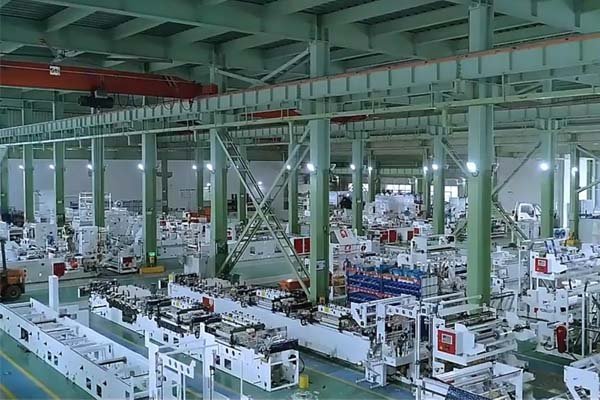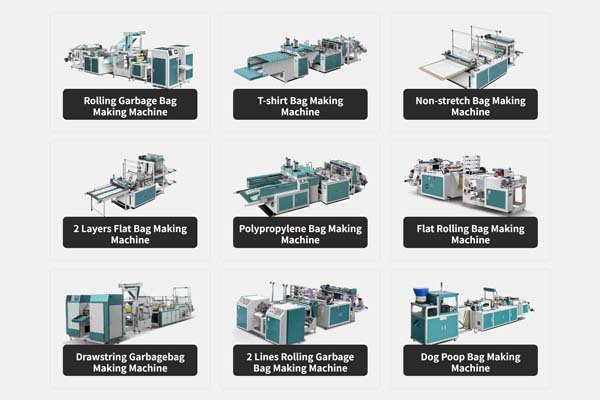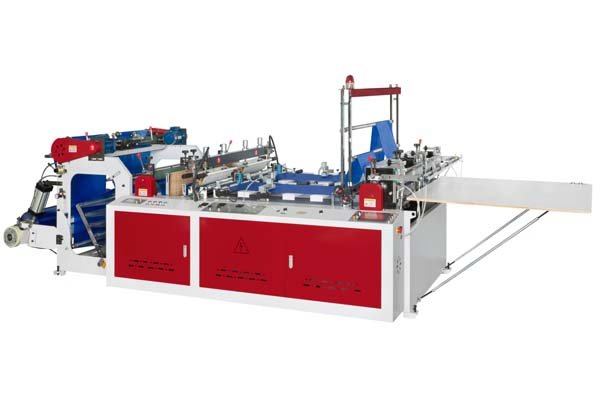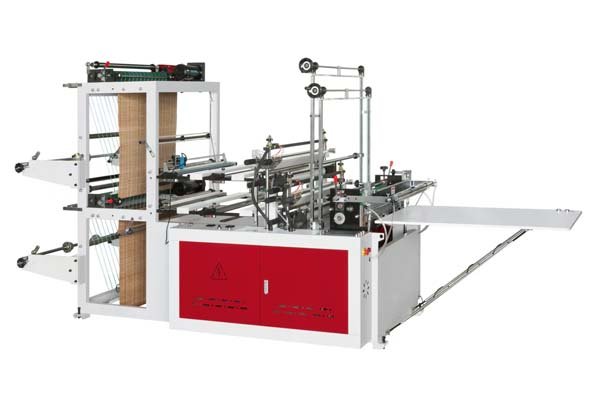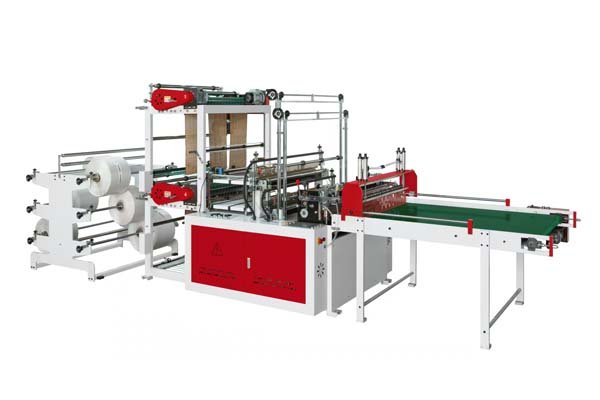
Are you tired of producing plastic film that tears easily or has inconsistent thickness? This problem leads to material waste1 and can damage your reputation with clients. The solution is often a simple machine adjustment.
Yes, we have clear examples. We worked with a German packaging supplier who was struggling with their FFS bags. By helping them adjust the blow-up ratio2 (BUR) from 2.2:1 to a more optimal 2.5:1, they immediately improved the film's tear resistance.
This adjustment is a perfect example of applied science in our industry. The blow-up ratio directly impacts the molecular orientation of the plastic. A low BUR stretches the film more in the machine direction (MD), making it strong one way but weak in the transverse direction (TD). By increasing the BUR, we helped our client achieve a more balanced orientation. This gave the film nearly equal strength in both directions, which is critical for packaging that needs to withstand pressure from all sides. Our BagMec® machines with "Smart Tension Control" make these fine-tunings precise and repeatable.
The benefits of this single change were significant for our client.
- Balanced Tensile Strength: The film no longer tore easily when pulled from the side. This was crucial for their automated Form-Fill-Seal (FFS) lines.
- Improved Impact Resistance: The balanced film could better absorb impacts during shipping and handling, reducing product damage.
- Reduced Material Waste: With a stable and strong film, production interruptions dropped, and they achieved an 18% reduction in material waste.
What is the ideal blow-up ratio for different bag types?
The right BUR is not a universal number. It completely depends on the material you are using and the final purpose of the bag.
For high-strength applications using HDPE, a higher BUR of 3:1 to 4:1 is common. For general-purpose LDPE bags where clarity is important, a lower BUR of 2:1 to 2.5:1 works best. The key is to match the BUR to the desired film properties.

Choosing the correct BUR requires a deeper look into the material and application. It’s a balance between strength, stability, and other physical properties.
Matching BUR to Film Application
Different bags have very different requirements. A thin t-shirt bag needs different properties than a heavy-duty sack for industrial materials. We help our customers find the perfect setting for their specific needs.
| Bag Type | Material | Typical BUR | Why It Works |
|---|---|---|---|
| T-Shirt Bags | HDPE | 3.5:1 - 4.5:1 | Maximizes TD strength for carrying heavy items without tearing. |
| Garbage Bags | LDPE/LLDPE | 2.0:1 - 2.8:1 | Balances MD and TD strength for good puncture and tear resistance. |
| Courier Bags | Co-extruded | 2.5:1 - 3.0:1 | Provides excellent toughness and durability for logistics handling. |
| Lamination Pouches | LLDPE | 1.8:1 - 2.5:1 | Creates a stable film with good clarity, ideal for laminating. |
Factors Beyond the Material
While the type of plastic is the main factor, other things also influence the ideal BUR.
- Desired Film Properties: Do you need maximum stiffness (high BUR with HDPE) or better optics and clarity (lower BUR with LDPE)? You must define your priority.
- Additive Usage: The use of additives like color concentrates or anti-block agents can affect the melt strength of the plastic. This may require small adjustments to your BUR to keep the bubble stable.
- Downstream Equipment: If the film will be used in a high-speed printing or converting line, stability is key. A slightly lower, more stable BUR might be better than a higher, more aggressive ratio that pushes the limits.
How do you adjust the blow-up ratio on a BagMec® machine?
Adjusting the BUR is a core skill for any film extrusion operator. We design our machines to make this process simple and accurate.
On a BagMec® machine, you adjust the blow-up ratio by controlling two main things: the volume of air inside the film bubble and the speed of the nip rollers. Our PLC touchscreen interface allows for precise, recordable changes to both.
This process is straightforward and gives you direct control over your film’s final properties. We ensure our customers, from startups like Priya Kapoor's to large manufacturers, can master this easily.
A Simple Step-by-Step Guide
Here is how an operator would typically adjust the BUR on one of our machines:
- Establish a Stable Bubble: First, start the extruder and create a stable bubble at a baseline setting.
- Adjust Airflow: To increase the BUR, you slowly increase the amount of air fed into the die. This inflates the bubble, increasing its diameter. To decrease it, you reduce the airflow. Our systems have precise valves for this.
- Control Nip Roller Speed: The speed of the nip rollers, which pull the film upward, also affects the final film. You can adjust this speed on the central PLC control panel. A faster speed can stretch the film more in the machine direction.
- Monitor and Measure: As you make adjustments, you must measure the layflat width of the film after it has been collapsed. The formula is simple: BUR = (Layflat Width x 0.637) / Die Diameter.
- Fine-Tune for Quality: Use our integrated "Smart Tension Control" system to monitor film stability in real-time. Make small, incremental changes until you achieve the desired balance of strength and clarity.
What are the risks of an incorrect blow-up ratio?
Setting the wrong BUR is not a small mistake. It can lead to major production headaches, material waste, and poor-quality bags that fail in the field.
An incorrectly set BUR directly impacts production stability and film quality. If the ratio is too low, the film will be weak and prone to splitting. If it's too high, the bubble can become unstable, causing wrinkles and thickness variations.
Understanding these risks helps you appreciate the importance of getting it right. A client like Carlos Mendez, who needs aseptic diaper bags, cannot afford the inconsistencies that come from an unstable process.
Comparing Low vs. High Blow-Up Ratios
Let's break down the specific problems caused by an incorrect BUR. This is one of the first things we check during our 72-hour continuous operation stress tests.
| Issue | BUR Too Low (e.g., 1.5:1) | BUR Too High (e.g., >5:1 for HDPE) |
|---|---|---|
| Film Strength | Very strong in the machine direction (MD) but extremely weak in the transverse direction (TD). The film splits easily. | Can create better-balanced properties, but pushes the material to its limit. |
| Bubble Stability | Very stable and easy to control. | Unstable, "wobbly," and prone to breaking. This causes significant downtime and waste. |
| Film Thickness | Generally uniform and consistent. | Prone to gauge bands (thick and thin spots) and wrinkles because the bubble is not stable. |
| Appearance | Film is often very clear (good optics). | Film can become hazy or frosty in appearance. |
| Production Speed | Can limit production rates because film is not being stretched to its potential. | Difficult to run at high speeds due to instability. |
Basically, a low BUR gives you a stable but unbalanced film. A high BUR gives you a potentially stronger film but with a much higher risk of production problems. The ideal BUR is in the middle, providing a perfect balance for your specific application.
Conclusion
Mastering the blow-up ratio is essential for producing high-quality plastic film. Real-world adjustments, like those we've made for our clients, prove that a small change can lead to big improvements in strength and waste reduction, directly impacting your bottom line.

